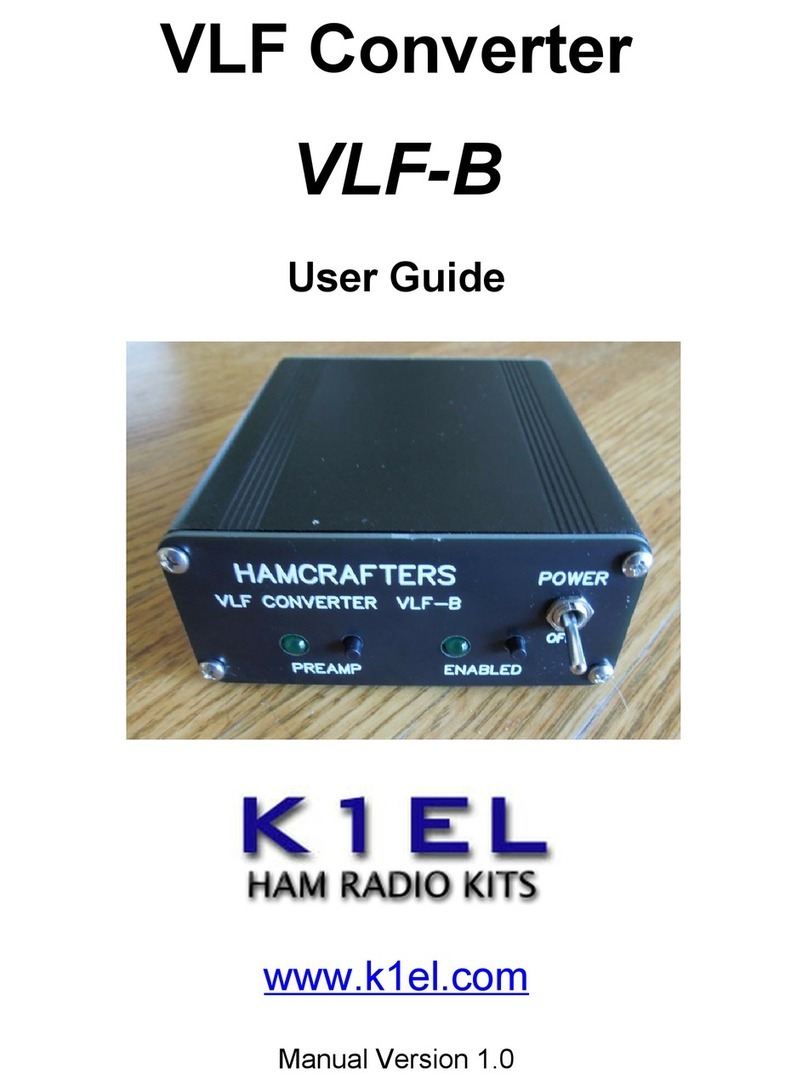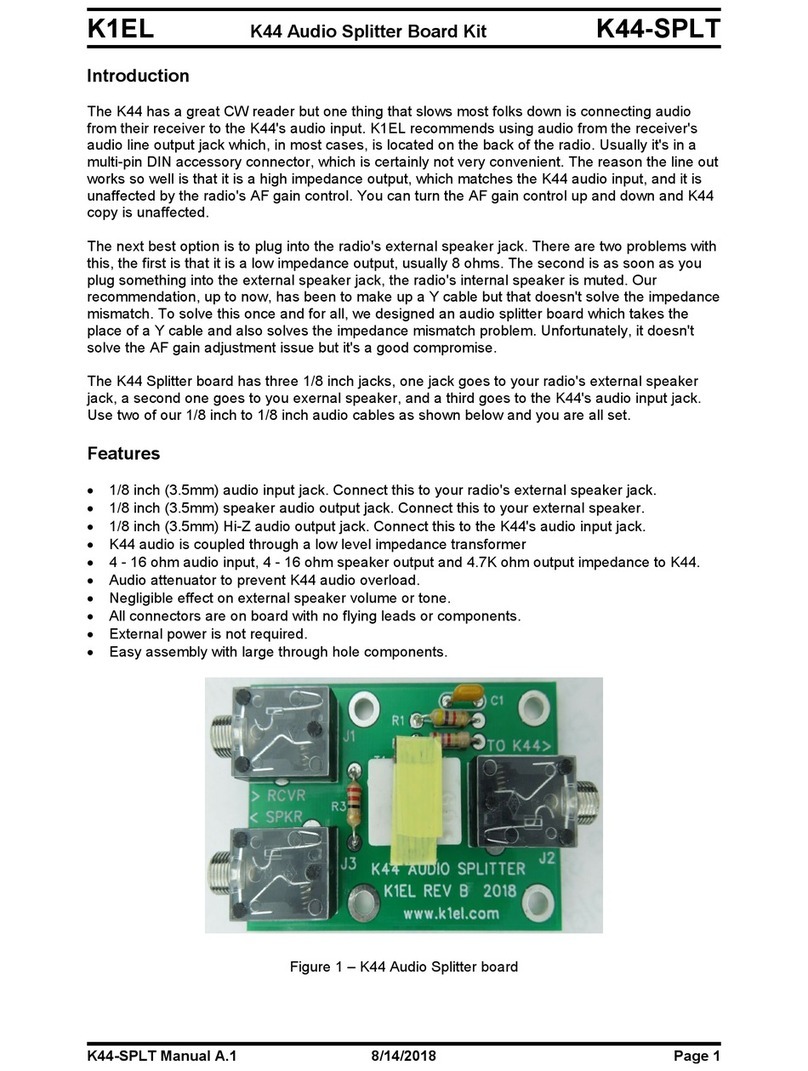
K1EL K45 Audio Splitter Board Kit K45-SPLT
K45 CW Reader Settings, or how to get the best copy out of your CWR
1) The K45 CWR does not like noise. If you set the signal level properly, noise will be less of
an issue. Before trying to copy any stations, find a frequency where there is no activity. If
there is a lot of band noise, you may see the LEDs respond to the noise and climb up two
or three LEDs. This is a bad setup. Use the K45's gain adjustment (SHIFT+ENCODER
CCW) to reduce the gain until either the first LED never or just barely lights. A gain
setting of 3 is a typical high noise setting but it is highly dependent on the signal level you
feed into the K45. Once the gain is set correctly, you will find that the LEDs will respond
accurately to CW signals and provide much better copy.
2) Find the optimal gain setting in quiet band conditions. Again find a quiet band spot and
adjust the CWR gain until the first LED just barely lights. If you encounter very strong
stations, you may have to reduce gain as described in the next paragraph.
3) Avoid overloading the K45's CW decoder. Too much gain can be just as bad as not
enough. In general, you should set maximum signal level to the point where the 5th LED
on the right just barely lights when a station is tuned in. This is the point where signal
clipping first occurs. While the K45 CWR handles overload pretty well, reducing the gain
gives you the narrowest filtering. If the signal increases beyond clipping, the 5th and 1st or
2nd LEDs will light at the same time. This is an extreme overload condition and can
happen with very strong signals. You should back the CWR gain off to get the signal level
under control. In extreme cases you may need to reduce the receiver's RF gain setting.
4) The CWR's noise filtering setting does matter. This filter, adjusted by ALT-ENCODER,
essentially controls the width of signal dropout correction. These dropouts are caused
mostly by fast burst noise such as static crashes. These dropouts are very short in
comparision to the width of a CW dit or dah and can be filtered out automatically. The
higher the filter setting, the more aggressively dropout reduction is employed. Not
surprisingly, very high settings will distort the CW integrity and will result in copy errors,
especially at higher CW speeds (25 WPM and above). Our recommendation is to leave
the filter at a low setting and use it only when there is a lot of atmospheric noise.
5) A receiver's automatic noise blanker does not help. Due to the way a noise blanker
works, it really confuses the CWR and for that reason we suggest not using it. In addition,
a fast AGC setting should also be avoided. Fast changes in signal level will also confuse
the CWR and affect copy. We suggest always using a slow attack AGC.
6) Narrow CW filters are not always worth using. Narrow CW filters (200 and 400 Hz) do
ring and distort the detection timing of the CWR. If the detected element widths aren't
correct then the CWR will make incorrect decoding decisions and misdecode letters. The
CWR has a built-in 6 pole narrow bandpass filter and in most cases this is all you really
need. That said, a good 2.3 KHz SSB filter with steep skirts does a good job in filtering
out adjacent signals and in most cases that's all you will need.
K45-SPLT Manual A.1 4/27/2023 Page 3






















